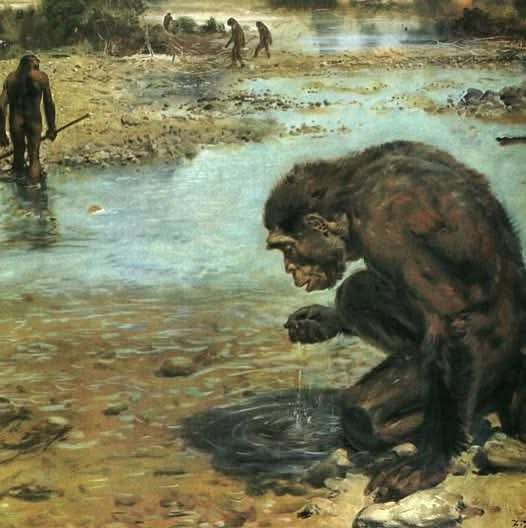Homo heidelbergensis was an ancient human species that lived during the Middle Pleistocene, roughly between 700,000 and 300,000 years ago. Their fossils have been discovered across Europe, parts of Africa, and possibly even Asia, suggesting they were a widespread and highly adaptable species. These early humans were robust, resourceful, and impressively equipped to handle the harsh environments of their time.Physically, H. heidelbergensis exhibited a mix of primitive and advanced traits. They had thick, heavy bones and pronounced brow ridges like their earlier ancestors, but they also possessed significantly larger brains—averaging about 1,200 to 1,300 cubic centimeters—which brought them closer in capacity to modern humans. Their increased brain size is linked to improved cognitive abilities, which is evident in their tool-making skills. They used more sophisticated stone tools than earlier hominins, including the Acheulean hand axes, and were capable hunters who could take down large animals such as elephants and hippos.Evidence also suggests that H. heidelbergensis was among the first human species to master fire consistently, a vital step in the evolutionary journey. Fire not only provided warmth and protection but also enabled them to cook food and possibly gather socially. Some archaeological sites even hint that they may have built simple shelters, demonstrating a level of planning and cooperation that goes beyond basic survival.For many years, scientists considered Homo heidelbergensis to be the last common ancestor of three later human groups: modern Homo sapiens, the Neanderthals (Homo neanderthalensis), and the Denisovans. However, recent genetic and fossil discoveries have challenged this linear view. Instead of a clean family tree, human evolution during this period now appears more like a tangled web, with different populations splitting off, interbreeding, and sometimes merging again in complex ways. This has led to H. heidelbergensis being dubbed the “muddle in the middle”—a fitting term for a species whose place in our ancestry is both pivotal and perplexing.Despite the uncertainties surrounding their exact role in our evolutionary story, Homo heidelbergensis remains a key figure in understanding how we became who we are. They lived in a world far wilder and less forgiving than today’s, yet they showed remarkable resilience and adaptability. In many ways, they bridge the gap between the ancient and the modern—close enough to us in behavior and appearance to be relatable, but still distinctly shaped by the challenges of their era.Their legacy lives on not just in bones and tools, but in the deep evolutionary currents that eventually led to the rise of modern humans. Homo heidelbergensis was not just a transitional species; they were survivors, innovators, and perhaps even the first to glimpse what it meant to be human.
